That evening sun go down
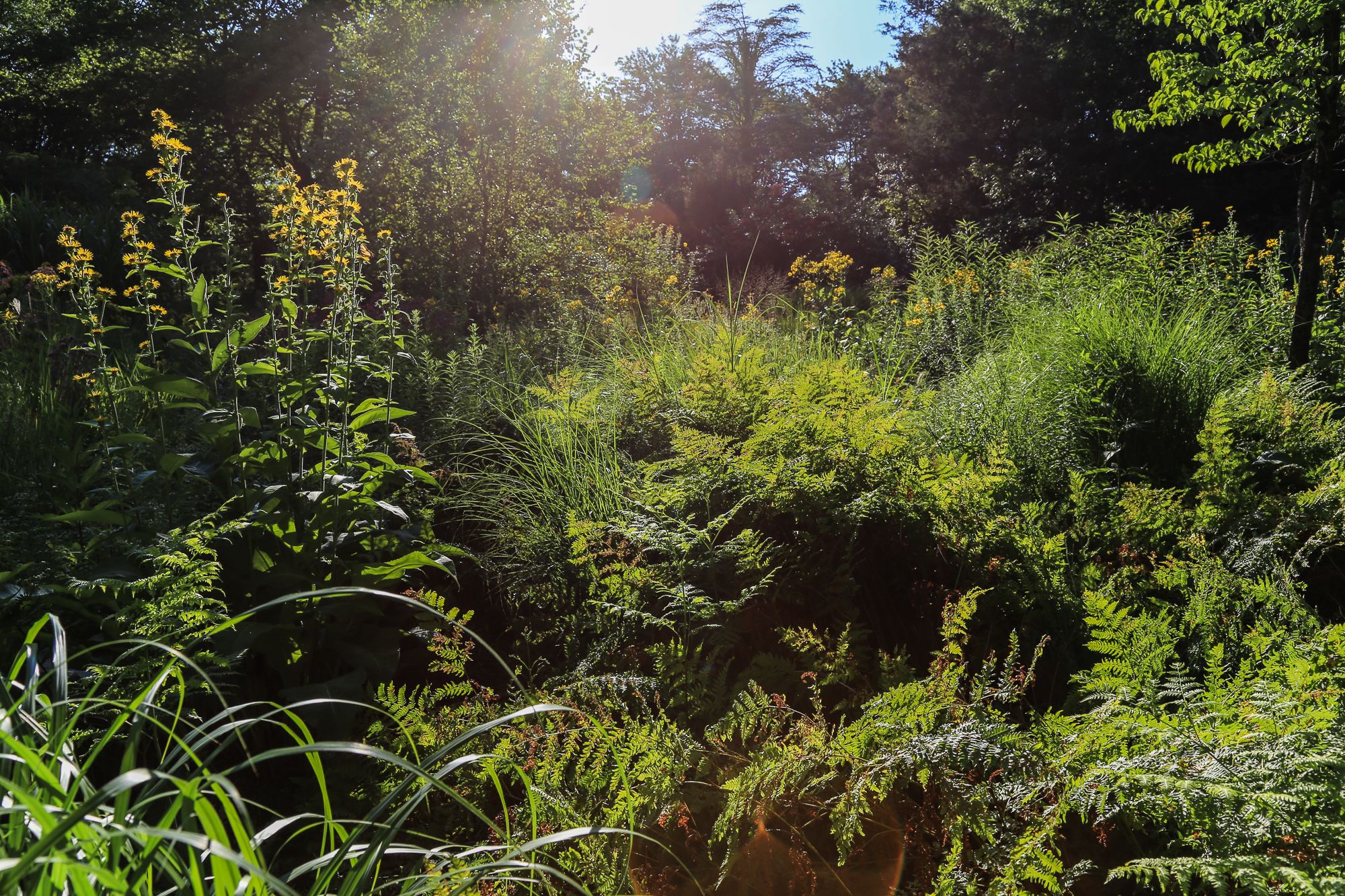 'I hate to see that evening sun go down.'The line comes from W.C. Handy's St. Louis Blues, composed by the man called the father of the blues. I think the power of this lyric comes from the sheer poetry of words and image. Why did Handy say "hate to see"? The image of the lowering sun is an evocative one, but it contains a hint of the dark to come, one William Faulkner recognized when he named a short story about a husband lying in wait to kill his wife 'That Evening Sun'.These garden photos--so shot through with light and creeping darkness--are extraordinarily suggestive of endings, all kinds of endings, but their melancholy tone isn't one of unpleasantness or fear, rather a kind of melancholy comfort.
'I hate to see that evening sun go down.'The line comes from W.C. Handy's St. Louis Blues, composed by the man called the father of the blues. I think the power of this lyric comes from the sheer poetry of words and image. Why did Handy say "hate to see"? The image of the lowering sun is an evocative one, but it contains a hint of the dark to come, one William Faulkner recognized when he named a short story about a husband lying in wait to kill his wife 'That Evening Sun'.These garden photos--so shot through with light and creeping darkness--are extraordinarily suggestive of endings, all kinds of endings, but their melancholy tone isn't one of unpleasantness or fear, rather a kind of melancholy comfort.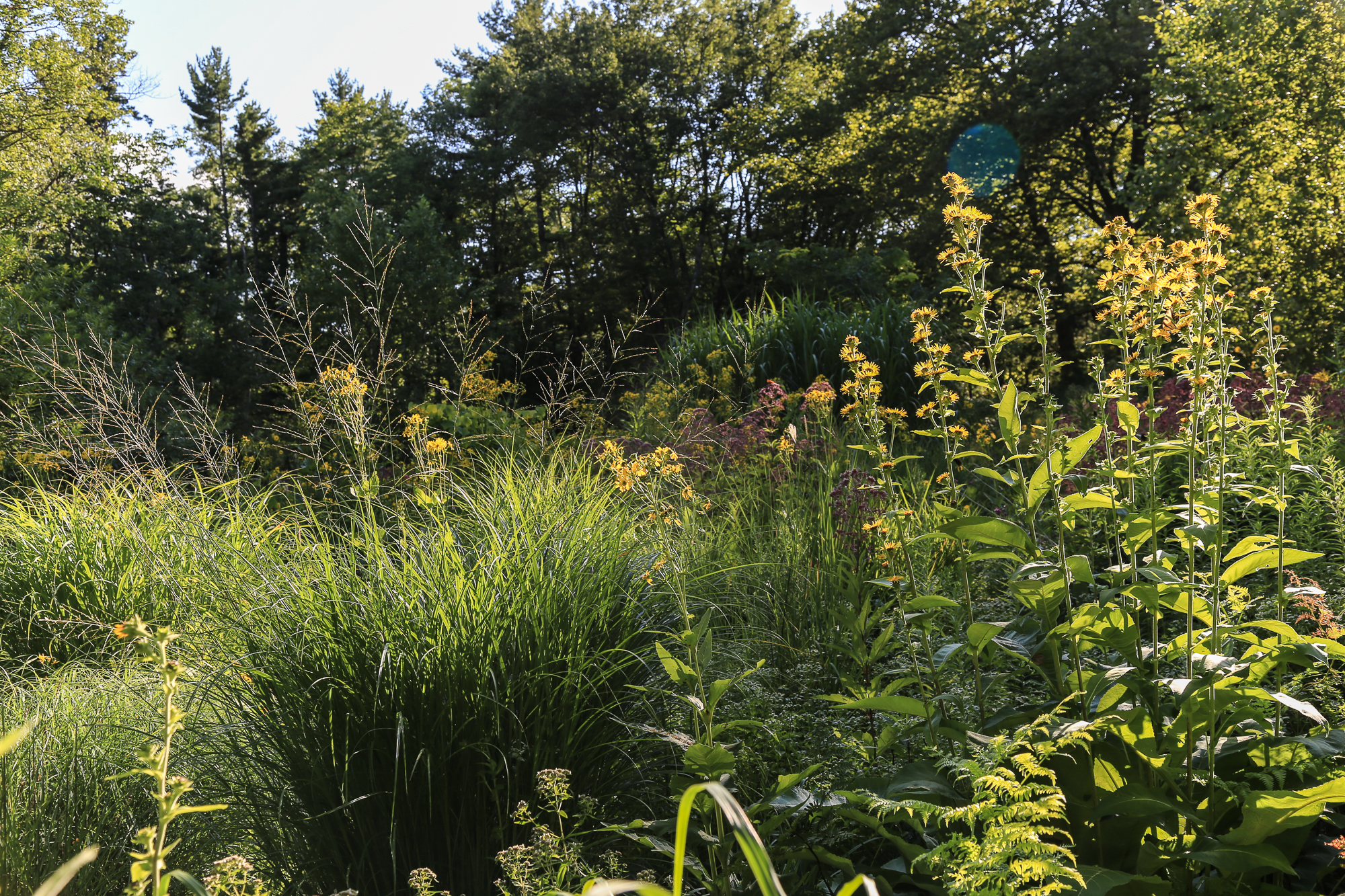 Aren't gardens in some sense contemplations on life and death, light and darkness, beginnings and endings?
Aren't gardens in some sense contemplations on life and death, light and darkness, beginnings and endings?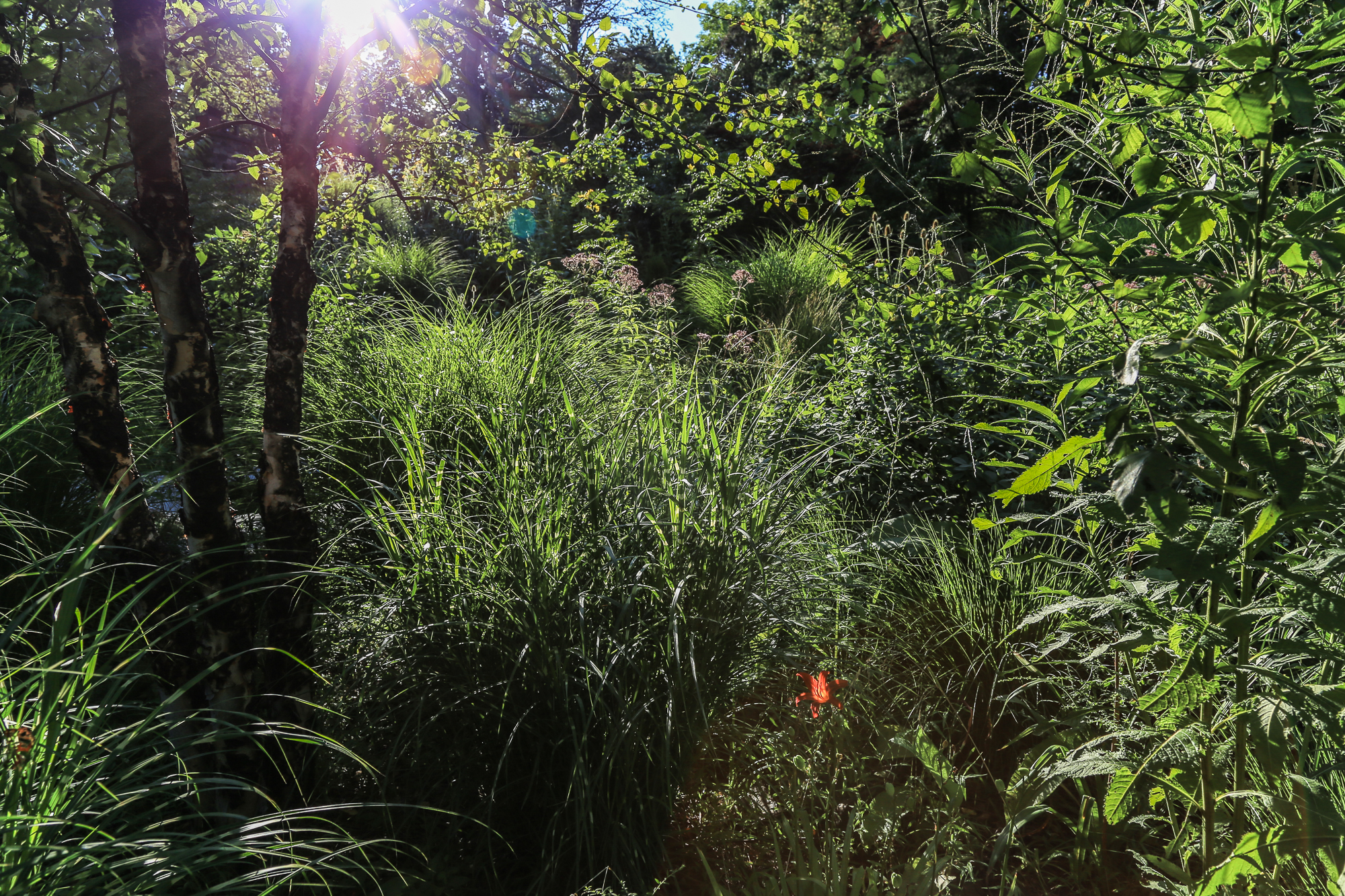 Or am I reading my own psychology as a template for all gardens?
Or am I reading my own psychology as a template for all gardens?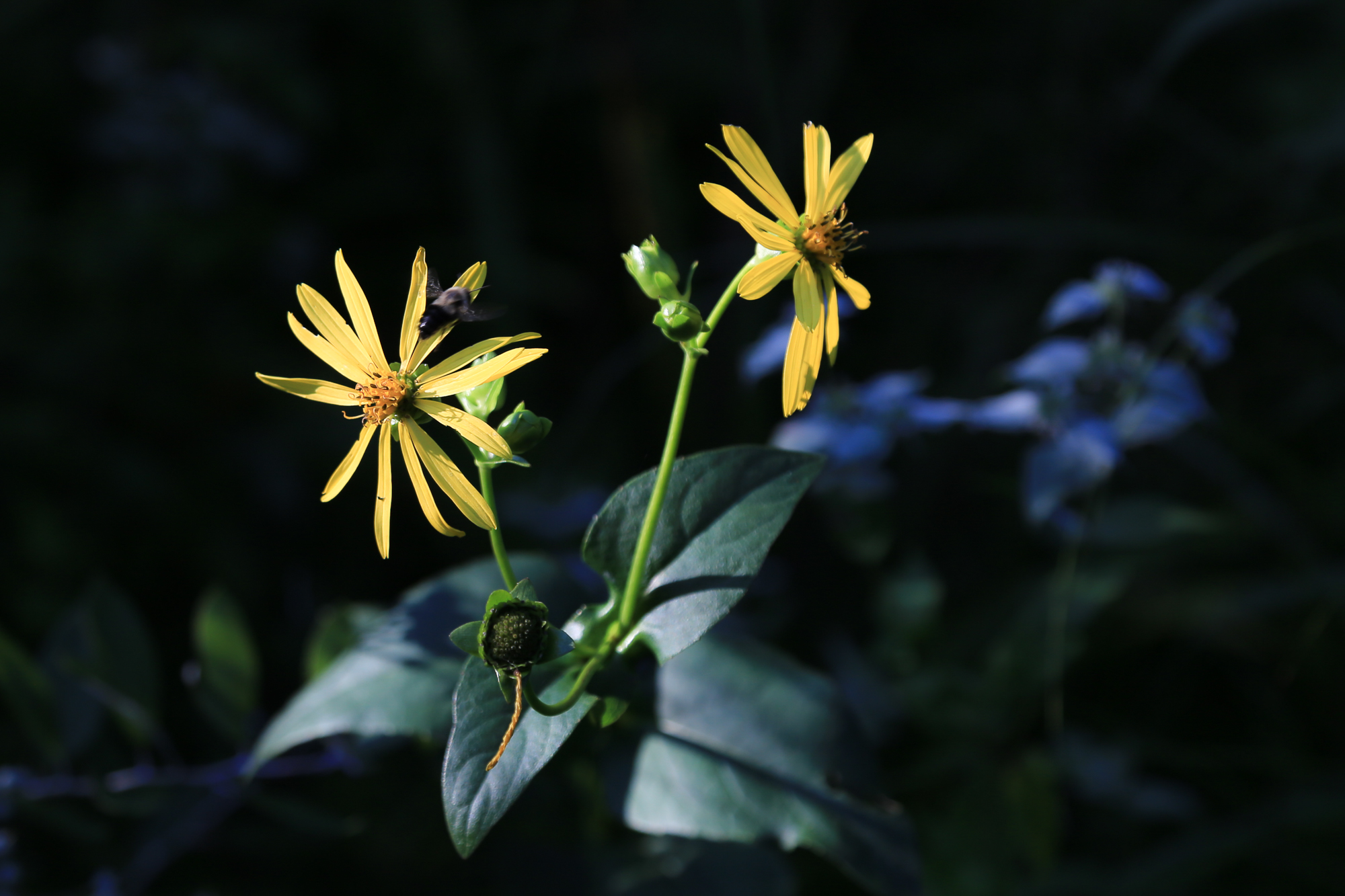 I remind myself gardens have other functions ...
I remind myself gardens have other functions ...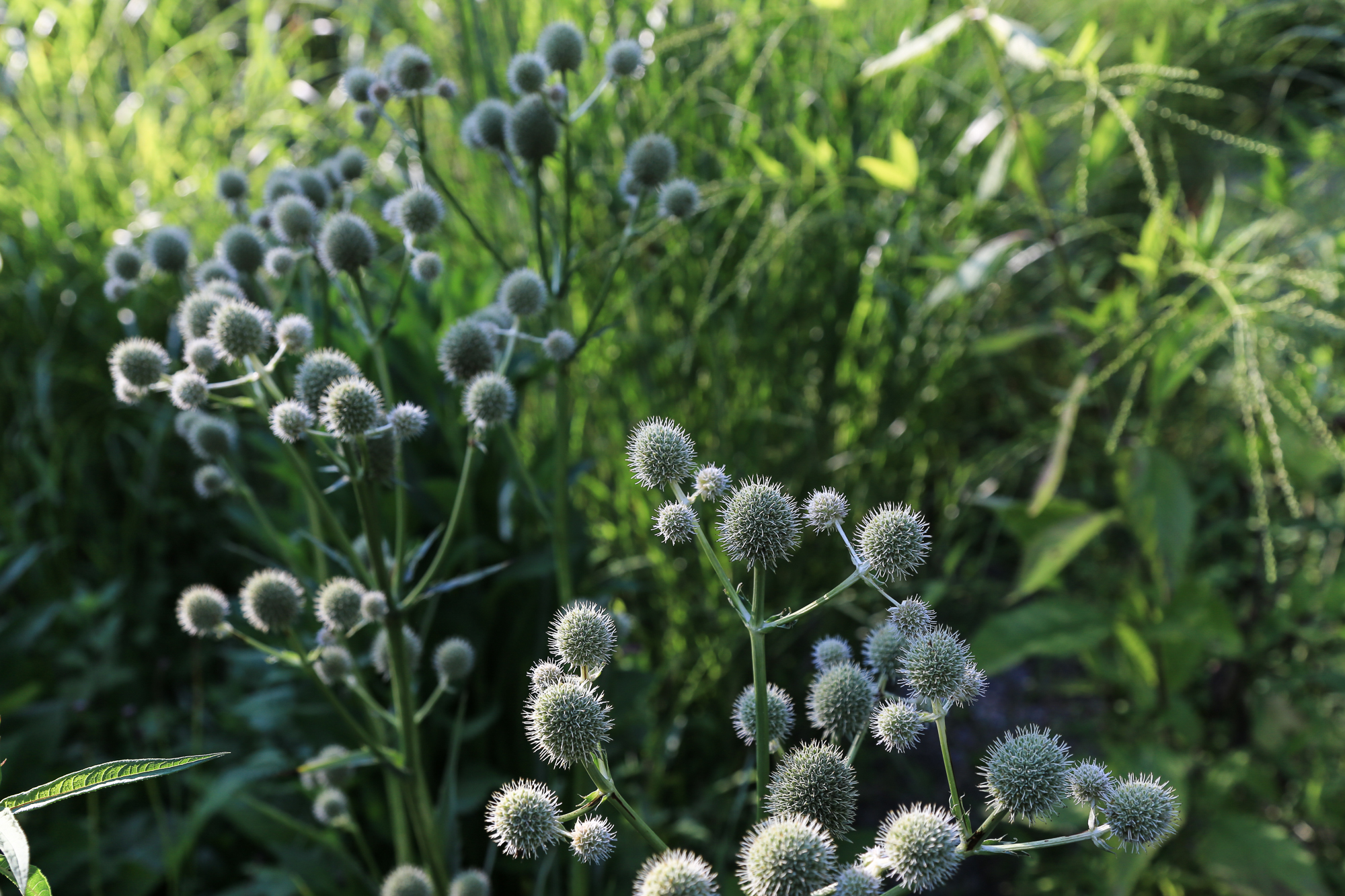 ... ecological functions, supporting myriad kinds of life from frogs to birds to praying mantises, multitudes of bees, innumerable invertebrates. Making a place for plant life to thrive and reproduce, a place where plant communities can evolve, where intricate webs of energy transfer can occur, a place where the processes of life and death in the garden actually change the physical surface of the earth.
... ecological functions, supporting myriad kinds of life from frogs to birds to praying mantises, multitudes of bees, innumerable invertebrates. Making a place for plant life to thrive and reproduce, a place where plant communities can evolve, where intricate webs of energy transfer can occur, a place where the processes of life and death in the garden actually change the physical surface of the earth. And therapeutic functions. Horticultural therapy of a sort was a chief concern of Frederick Law Olmsted in creating Central Park, and the view of nature as a place for relaxation and recharge, or withdrawal and renewal, has permeated our culture at least since the Romantic period, but certainly much, much longer.
And therapeutic functions. Horticultural therapy of a sort was a chief concern of Frederick Law Olmsted in creating Central Park, and the view of nature as a place for relaxation and recharge, or withdrawal and renewal, has permeated our culture at least since the Romantic period, but certainly much, much longer.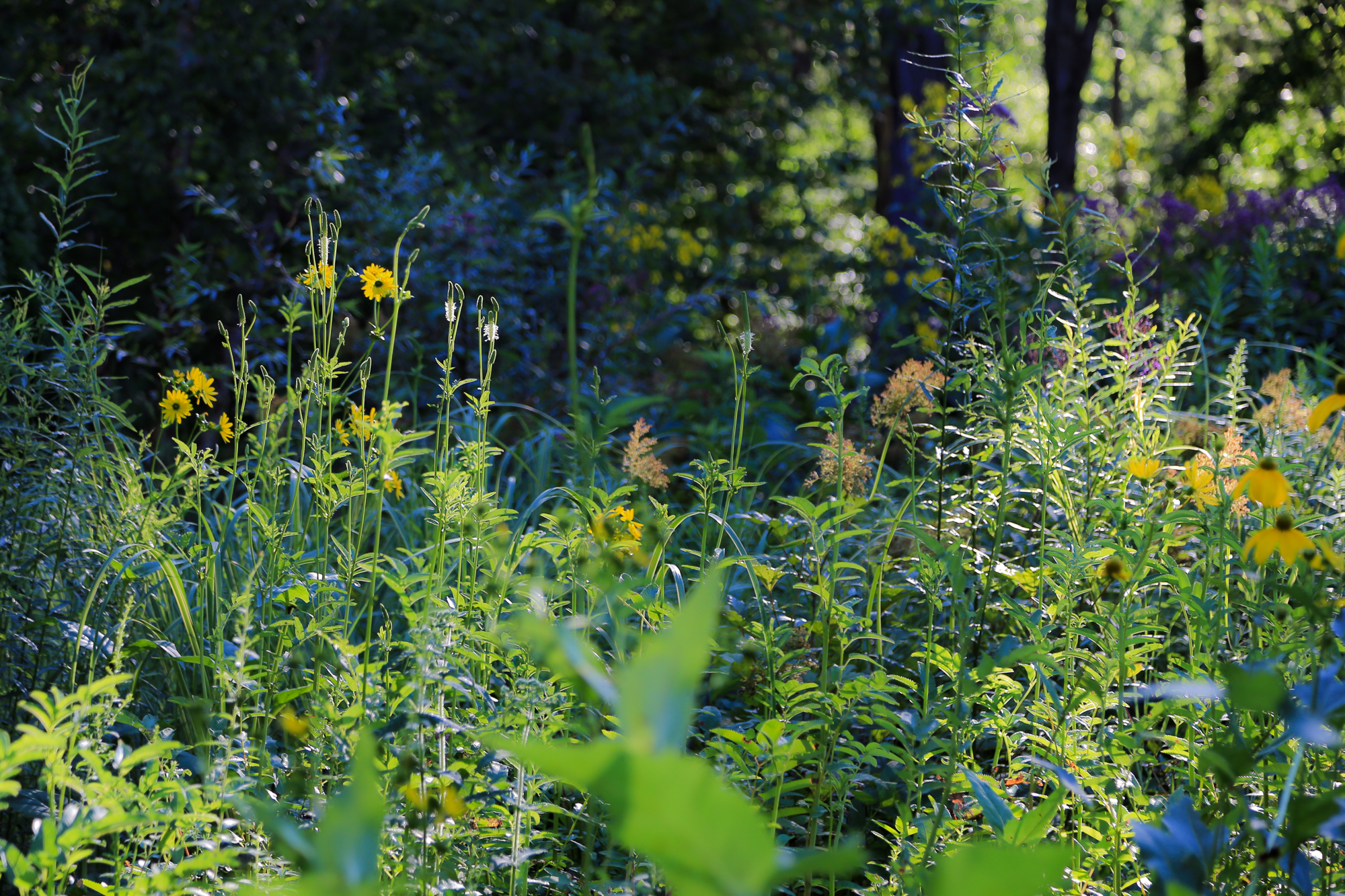 So what exactly is our encounter with the garden, with the landscape? What does it mean, and what can it mean? It has to be more than prettiness, than mere decoration, than simple utility, or why bother?I attended a landscape architecture conference at the University of Pennsylvania earlier this summer. In the lobby, where many books were on sale, my eyes were quickly drawn to a small volume titled 'A Field Guide to Melancholy' by Jacky Bowring. But getting that book only led me to Bowring's much more ambitious, and complex, 'Melancholy and the Landscape: Locating Sadness, Memory and Reflection in the Landscape'.
So what exactly is our encounter with the garden, with the landscape? What does it mean, and what can it mean? It has to be more than prettiness, than mere decoration, than simple utility, or why bother?I attended a landscape architecture conference at the University of Pennsylvania earlier this summer. In the lobby, where many books were on sale, my eyes were quickly drawn to a small volume titled 'A Field Guide to Melancholy' by Jacky Bowring. But getting that book only led me to Bowring's much more ambitious, and complex, 'Melancholy and the Landscape: Locating Sadness, Memory and Reflection in the Landscape'.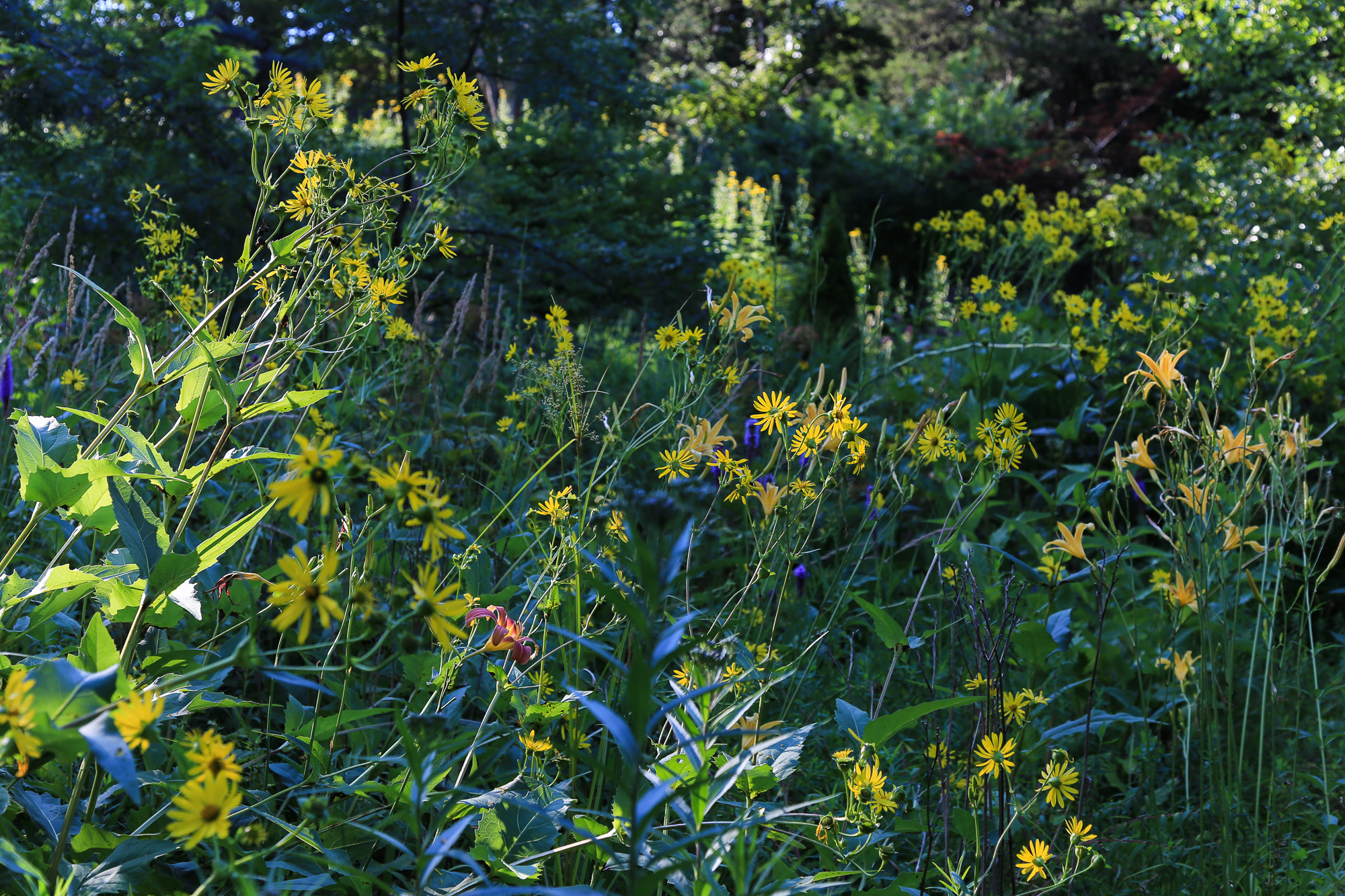 I quote her first on landscape, then on melancholy:'Across its vast compass, landscape in its expansive incorporation of gardens, environmental design, architecture, agriculture, infrastructure, and everything between and beyond, is the embodiment of identity. Points of reference are found as much in the representations of landscape – paintings, films, texts – as in the experiential, sensory, phenomenological realm. Whether landscape is a mirror, a theatre, a text or a seamless continuity with its inhabitants, it is the place from which we draw meaning, feeling; it is the armature for existence, the realm in which place and culture co-exist, and where the self dwells.'
I quote her first on landscape, then on melancholy:'Across its vast compass, landscape in its expansive incorporation of gardens, environmental design, architecture, agriculture, infrastructure, and everything between and beyond, is the embodiment of identity. Points of reference are found as much in the representations of landscape – paintings, films, texts – as in the experiential, sensory, phenomenological realm. Whether landscape is a mirror, a theatre, a text or a seamless continuity with its inhabitants, it is the place from which we draw meaning, feeling; it is the armature for existence, the realm in which place and culture co-exist, and where the self dwells.'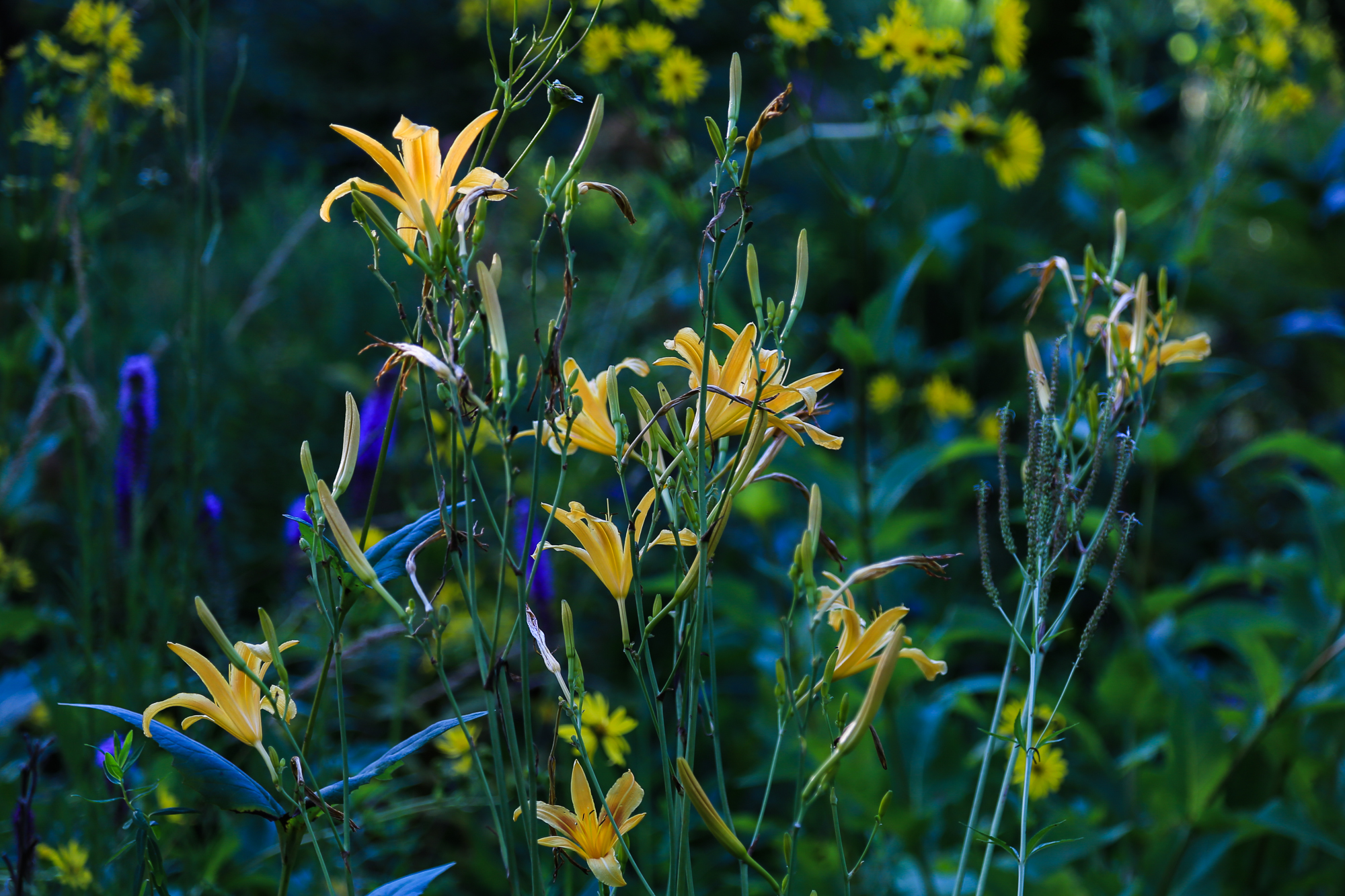 'Within this expansive and meaning-imbued terrain the landscape holds within it the natural habitat for melancholy, as the locus of places of contemplation, memory, death, sadness. Yet, the place of melancholy within the landscape is one which is often resisted, marginalised and edited out. As part of the salvaging of the idea of melancholy as a dimension of existence, this book also offers a critique of the impoverishment of the emotional content of the contemporary designed environment.'*
'Within this expansive and meaning-imbued terrain the landscape holds within it the natural habitat for melancholy, as the locus of places of contemplation, memory, death, sadness. Yet, the place of melancholy within the landscape is one which is often resisted, marginalised and edited out. As part of the salvaging of the idea of melancholy as a dimension of existence, this book also offers a critique of the impoverishment of the emotional content of the contemporary designed environment.'* Haven't we lost something in this 'editing out' and emphasis on 'happiness' above all? In a 'happy' garden designed for play, for cooking and for entertaining, for dining out, have we failed to make a place for those feelings evoked by Handy's line, 'I hate to see that evening sun go down'?
Haven't we lost something in this 'editing out' and emphasis on 'happiness' above all? In a 'happy' garden designed for play, for cooking and for entertaining, for dining out, have we failed to make a place for those feelings evoked by Handy's line, 'I hate to see that evening sun go down'?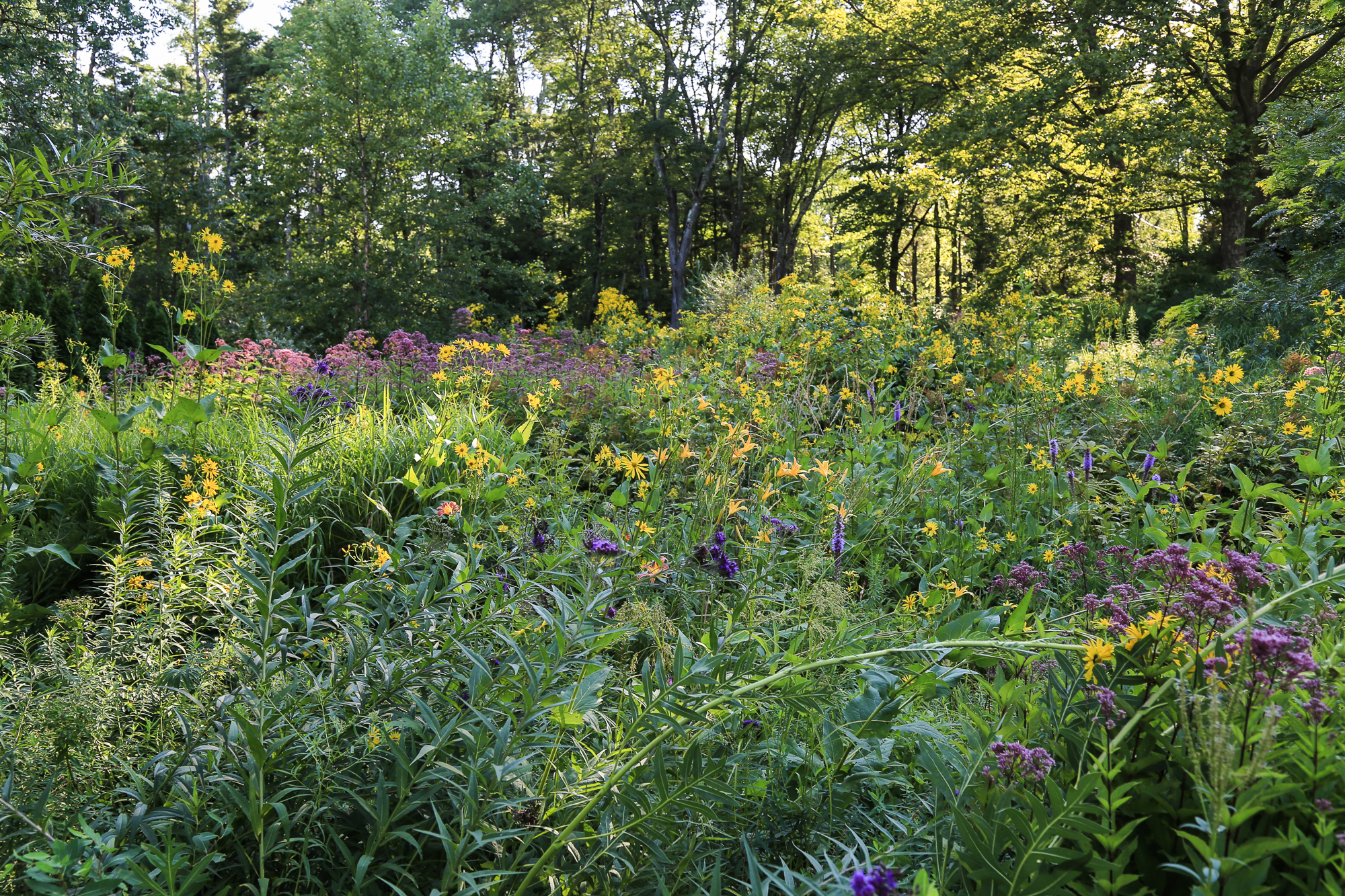 I'm reminded of the roots of our present-day Romantic notions of nature and the role of melancholy contributed by such seminal and defining works as Goethe's 'Sorrows of Young Werther' ...
I'm reminded of the roots of our present-day Romantic notions of nature and the role of melancholy contributed by such seminal and defining works as Goethe's 'Sorrows of Young Werther' ...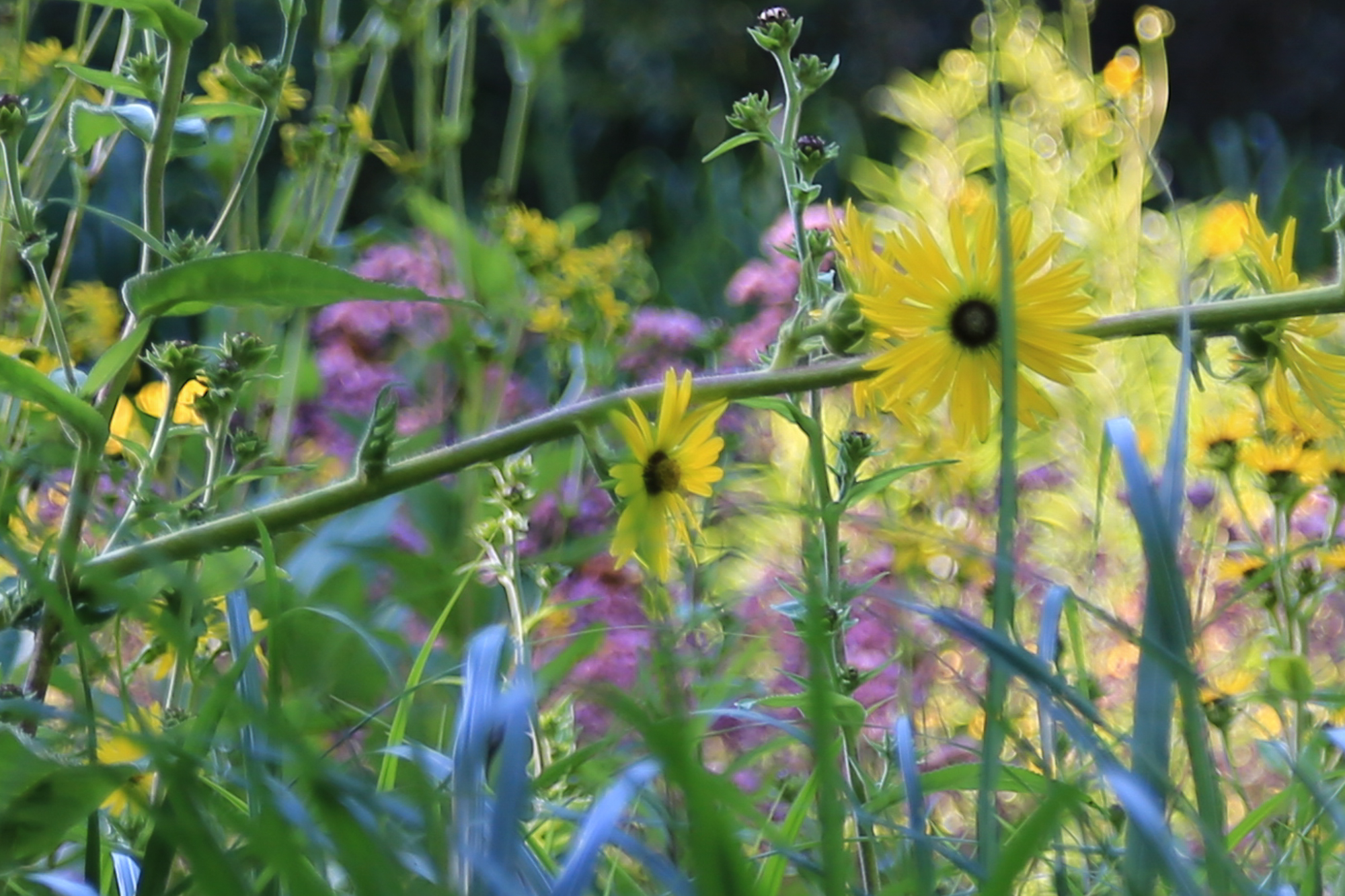 ... or of Keats' sensitivity to the physical manifestations of nature and the feelings it evokes, as in his Ode to Melancholy ...
... or of Keats' sensitivity to the physical manifestations of nature and the feelings it evokes, as in his Ode to Melancholy ...
'Ay, in the very temple of Delight Veil'd Melancholy has her sovran shrine ...'
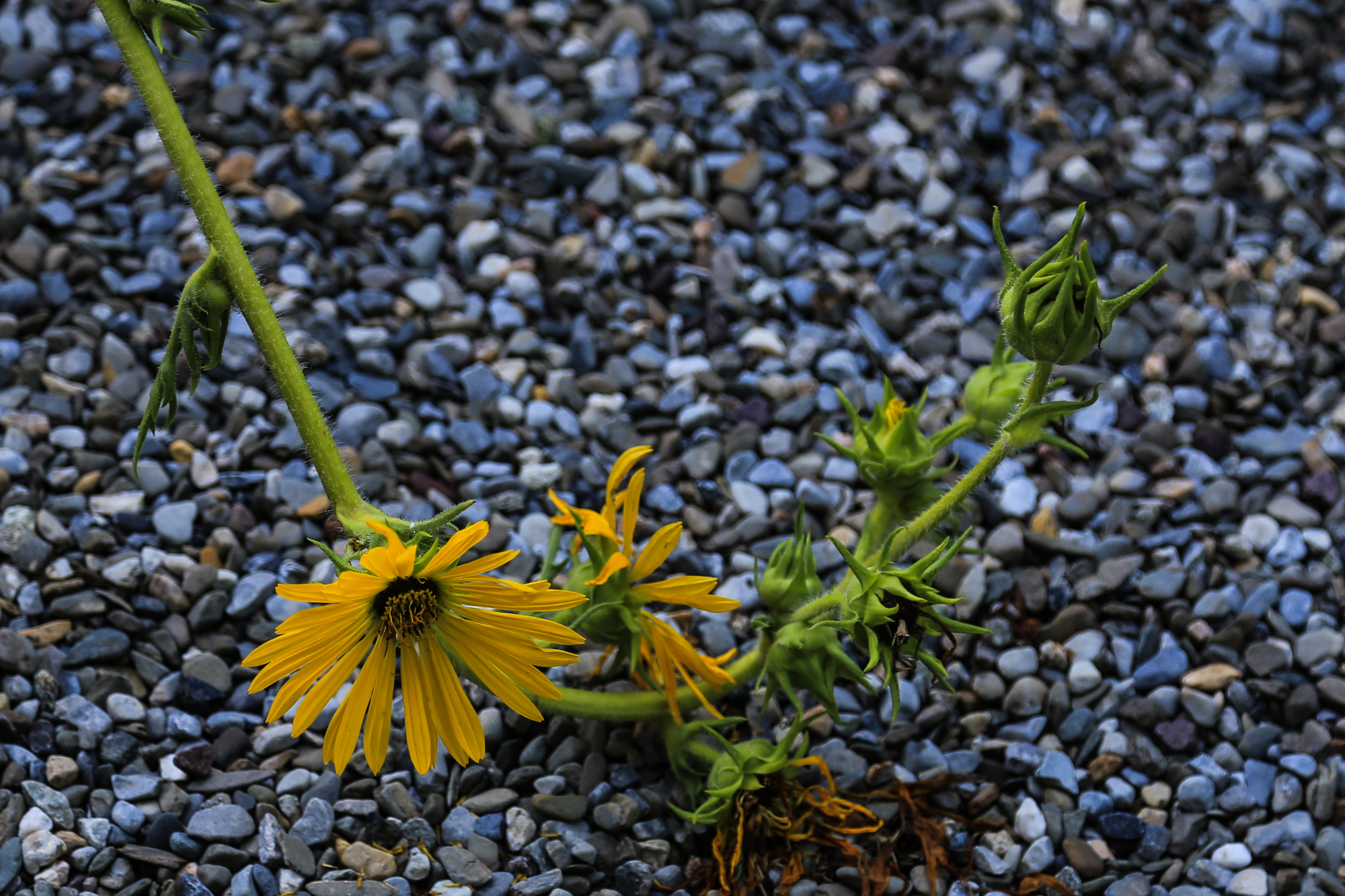 Cynical as we may have become in the twenty-first century, our emotions are still stirred in an almost stereotypical way by an image of a fallen flower, or a garden bower wrapped within a wall of woodland trees (even the word 'bower' has stereotypically romantic connotations).
Cynical as we may have become in the twenty-first century, our emotions are still stirred in an almost stereotypical way by an image of a fallen flower, or a garden bower wrapped within a wall of woodland trees (even the word 'bower' has stereotypically romantic connotations).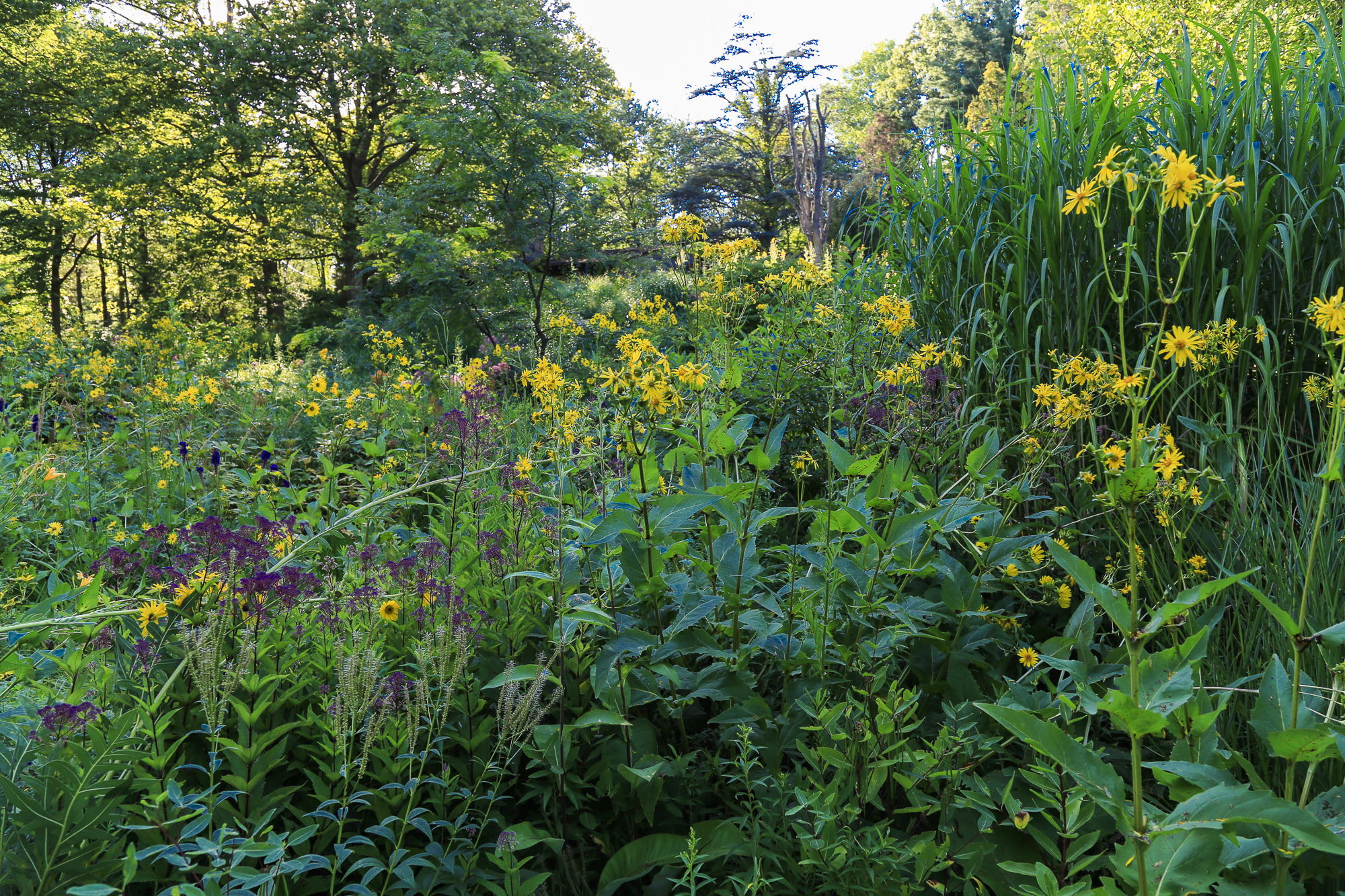 Wordsworth's transcendental thoughts suggest another aspect of romantic melancholy that has been 'edited out' in our cultural landscapes, as in Lines Written a Few Miles Above Tintern Abbey ...
Wordsworth's transcendental thoughts suggest another aspect of romantic melancholy that has been 'edited out' in our cultural landscapes, as in Lines Written a Few Miles Above Tintern Abbey ...
'For I have learnedTo look on nature, not as in the hourOf thoughtless youth; but hearing oftentimesThe still, sad music of humanity ...And I have feltA presence that disturbs me with the joyOf elevated thoughts; a sense sublimeOf something far more deeply interfused,Whose dwelling is the light of setting suns,And the round ocean and the living air,And the blue sky, and in the mind of man;A motion and a spirit, that impelsAll thinking things, all objects of all thought,And rolls through all things.'
These lines reveal far more than a simple feeling of melancholy. Here melancholic feelings spur Wordsworth on to a profound vision of meaning, albeit still romantically vague and ineffable. My concern here isn't so much with Wordsworth's meaning or its validity, but with a landscape that makes a place for such feelings and thoughts, that doesn't 'edit them out'.

We see the tradition of melancholic contemplation continued in the 'Americanized' Romanticism of William Cullen Bryant, Ralph Waldo Emerson and Henry David Thoreau.
And the garden makers among us, I think, will also see it in the design movement we call 'New Perennials', 'New Wave', 'Dutch Wave', or more generally, simply meadow and prairie design. From an article on Piet Oudolf in the New York Times: 'Allowing the garden to decompose, he added, meets an emotional need in people. “You accept death. You don’t take the plants out, because they still look good. And brown is also a color.”' (January 31, 2008, by Sally McGrane) How far apart are Wordsworth's words from those of Handy's line--'I hate to see that evening sun go down'?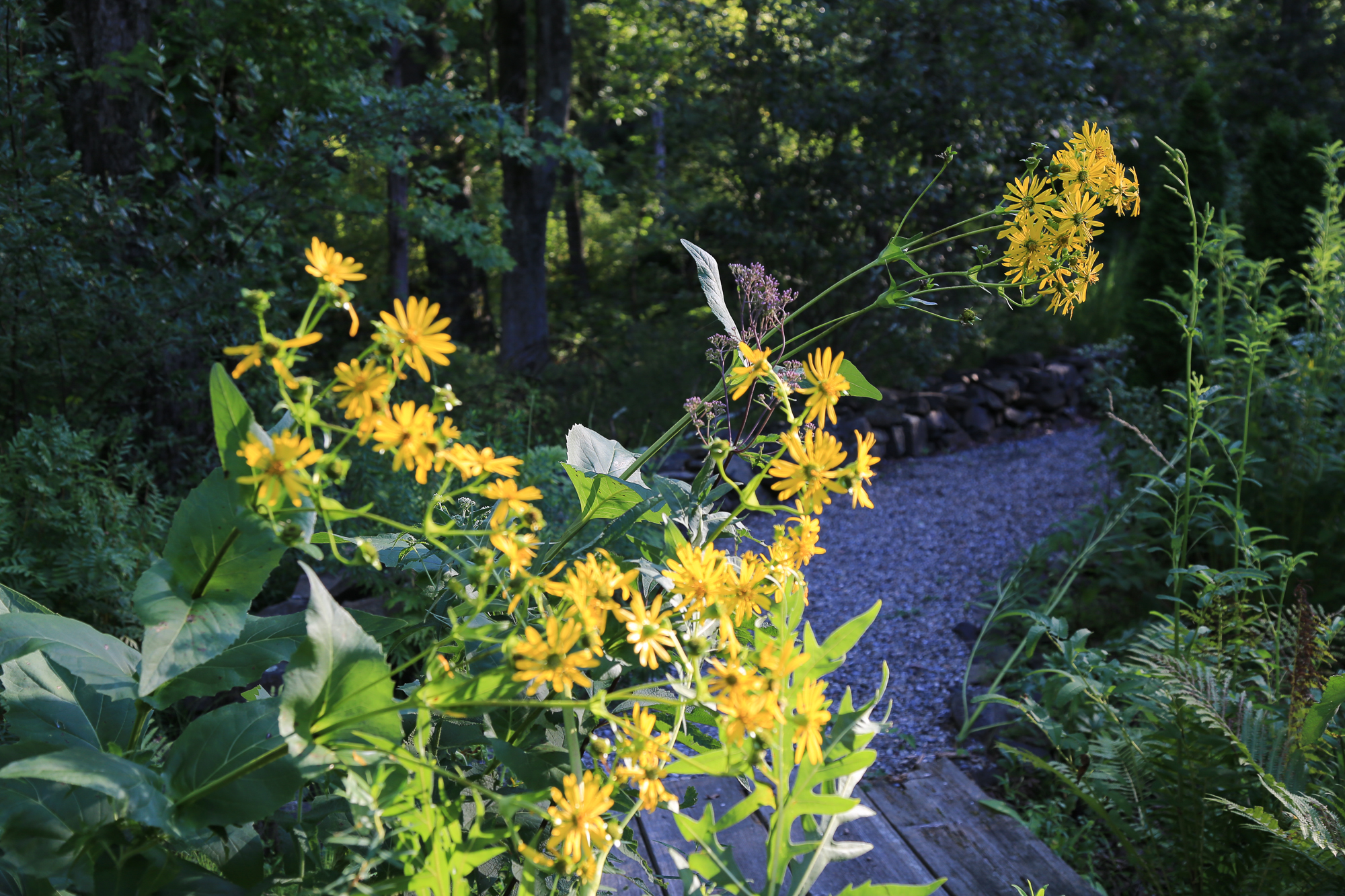 Even ecological approaches to gardening have at their heart a seeking after a lost world that was better, more pure--a most romantic notion. Are we always reaching back to a better time?
Even ecological approaches to gardening have at their heart a seeking after a lost world that was better, more pure--a most romantic notion. Are we always reaching back to a better time? My garden is at its peak now, now at the moment of its first decline, sidelit by the sun dropping toward the horizon ...
My garden is at its peak now, now at the moment of its first decline, sidelit by the sun dropping toward the horizon ...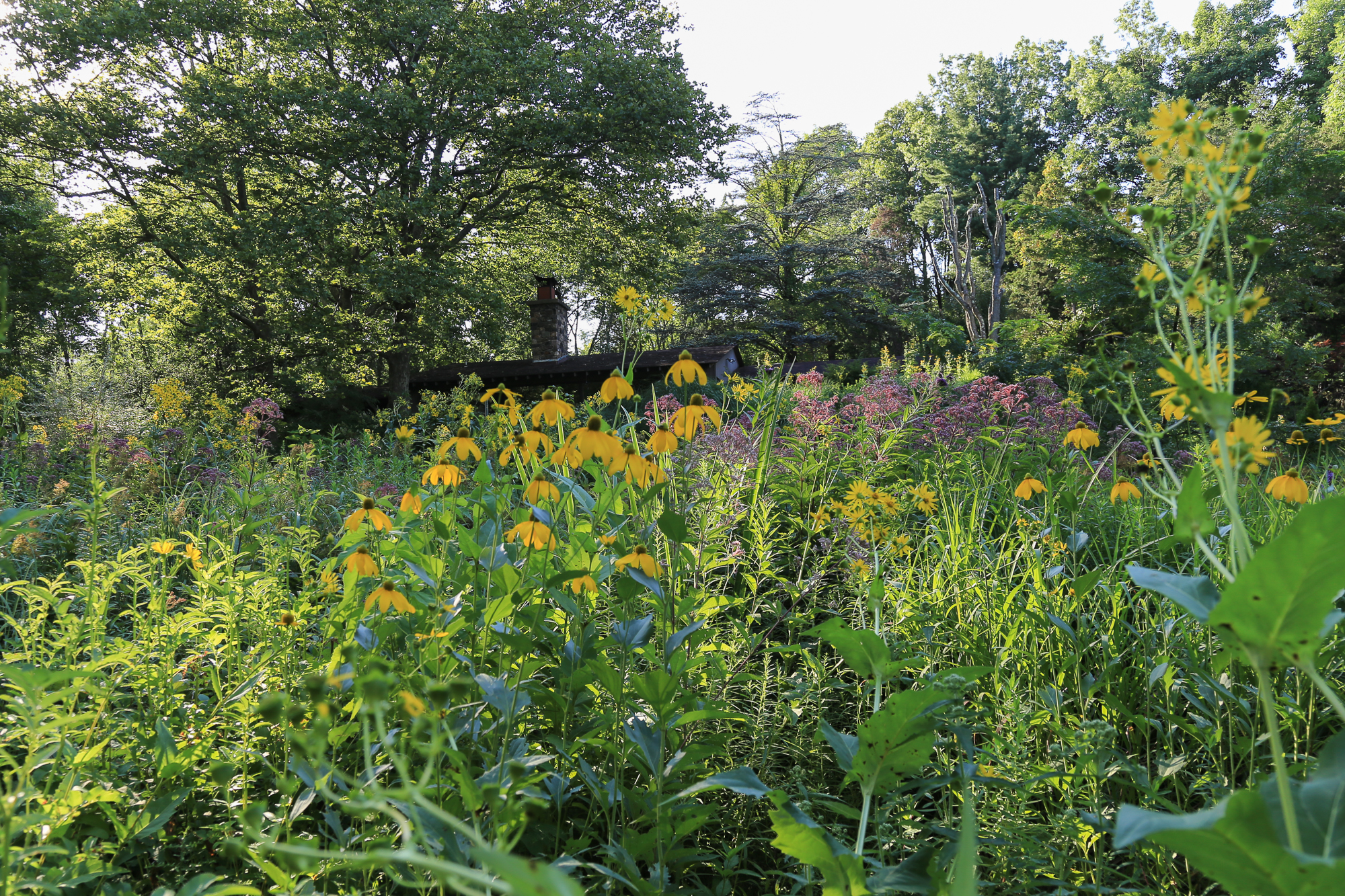 ... revealing detail and ways of seeing not possible earlier in the year ...
... revealing detail and ways of seeing not possible earlier in the year ... ... creating a chiaroscuro of light and dark ...
... creating a chiaroscuro of light and dark ...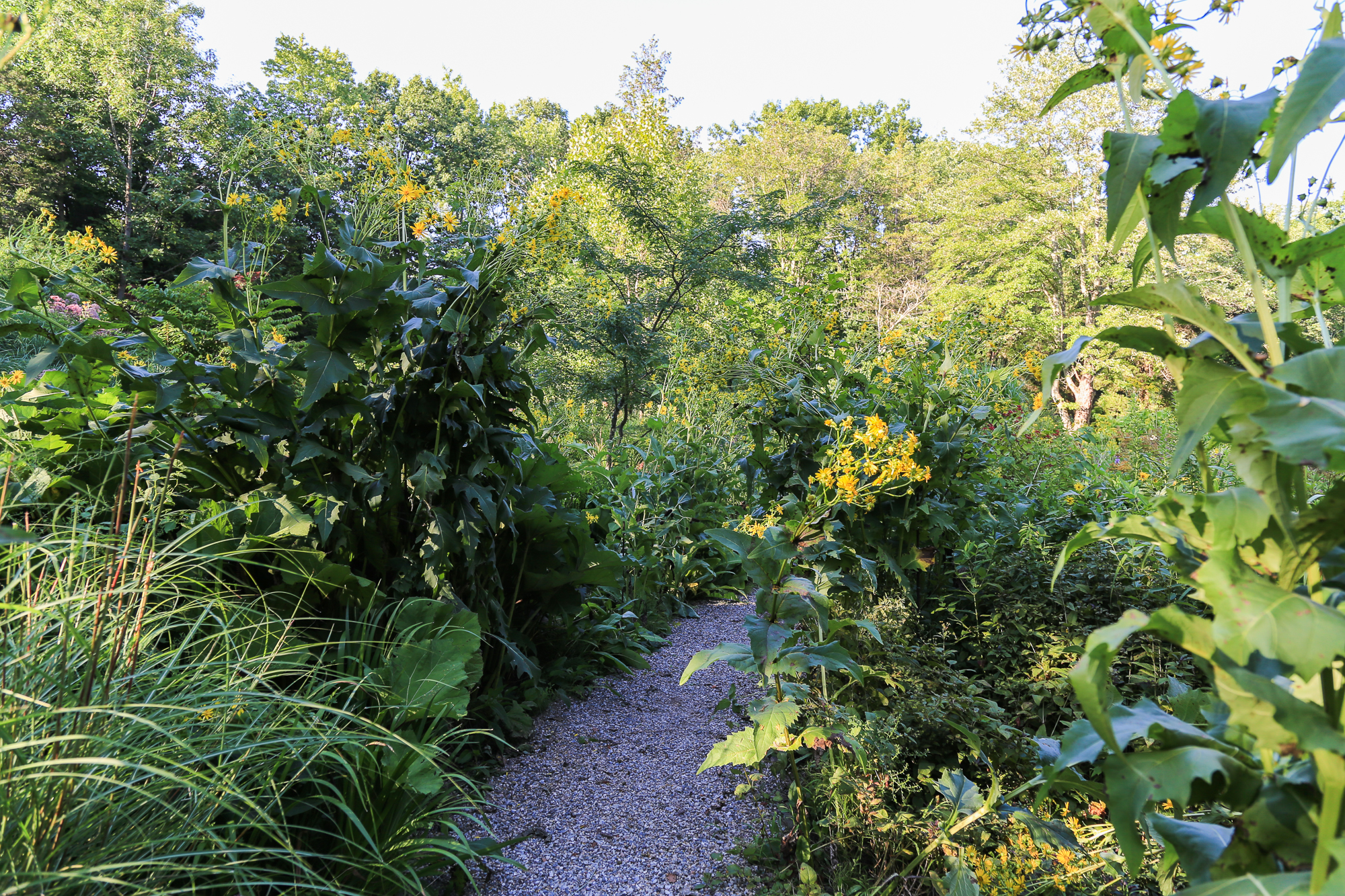 ... highlighting fine detail, and piercing into the depths of layered plantings ...
... highlighting fine detail, and piercing into the depths of layered plantings ...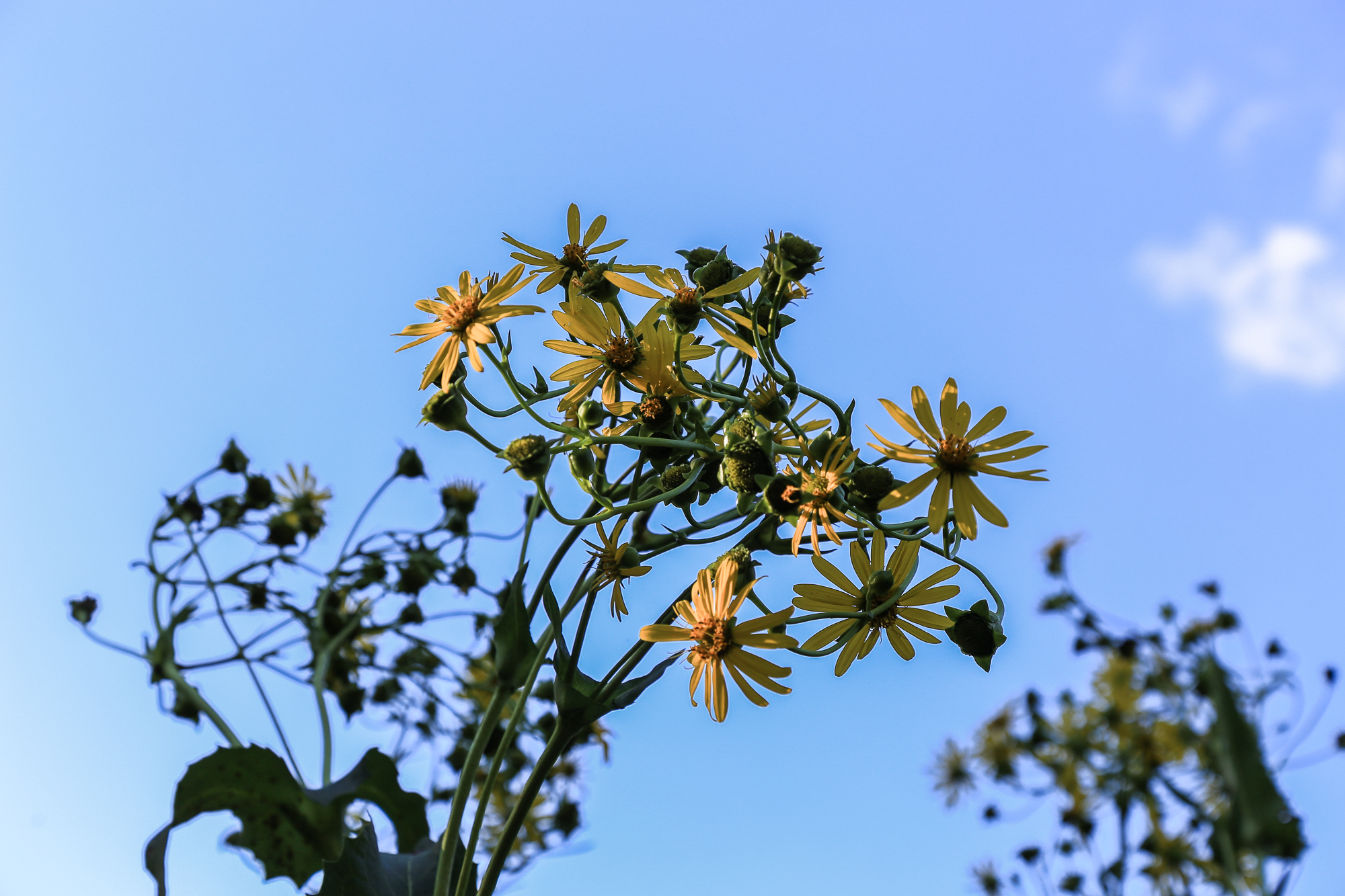 ... and differentiating form and shape, while evoking feelings not possible in the bright light of mid-day ...
... and differentiating form and shape, while evoking feelings not possible in the bright light of mid-day ... ... waking emotions no one would call happiness, but emotions nonetheless that are a kind of comfort and refuge.
... waking emotions no one would call happiness, but emotions nonetheless that are a kind of comfort and refuge.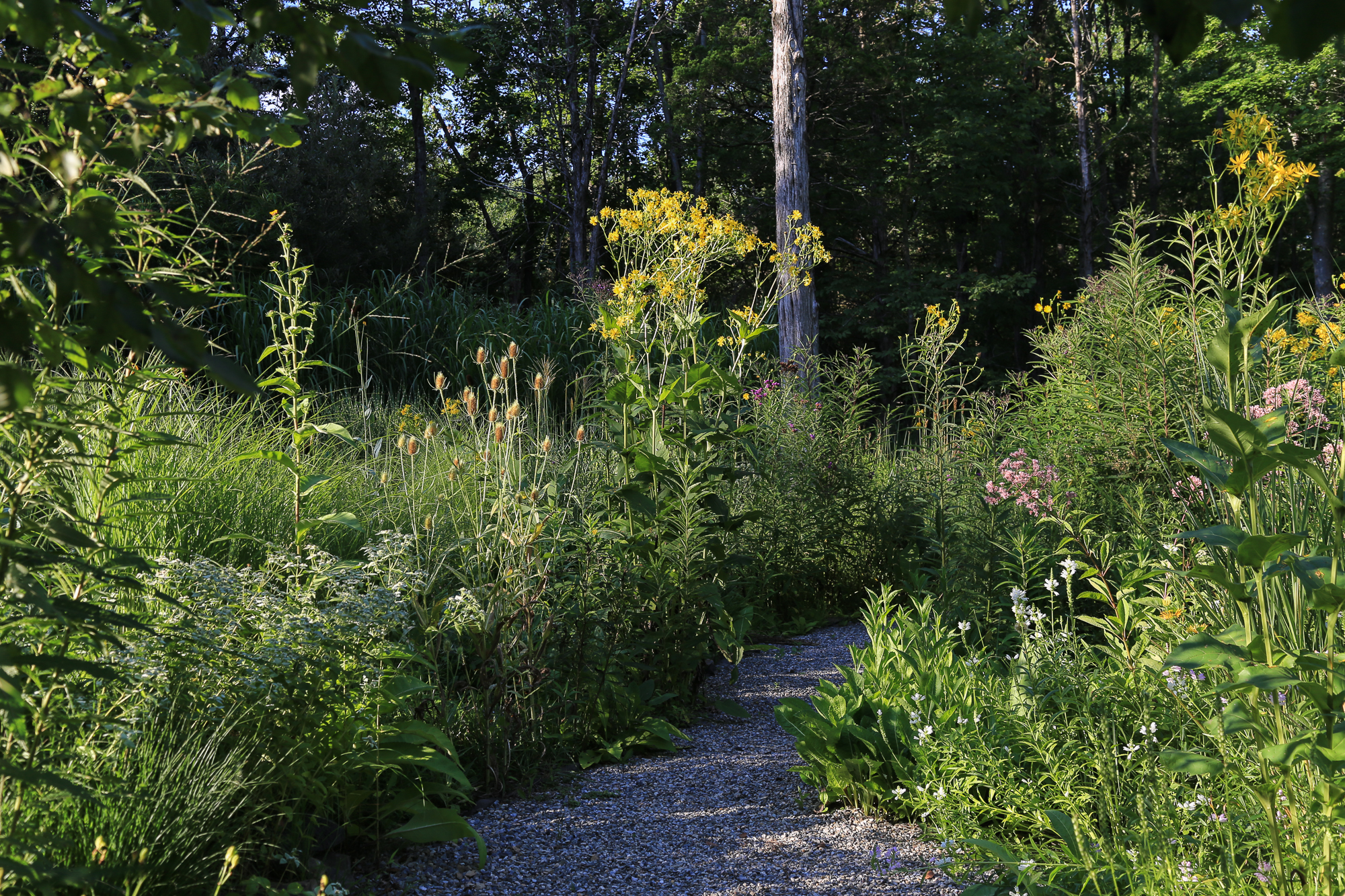 I like to think the sideways light of the setting sun must have become a part of the human genetic heritage ...
I like to think the sideways light of the setting sun must have become a part of the human genetic heritage ...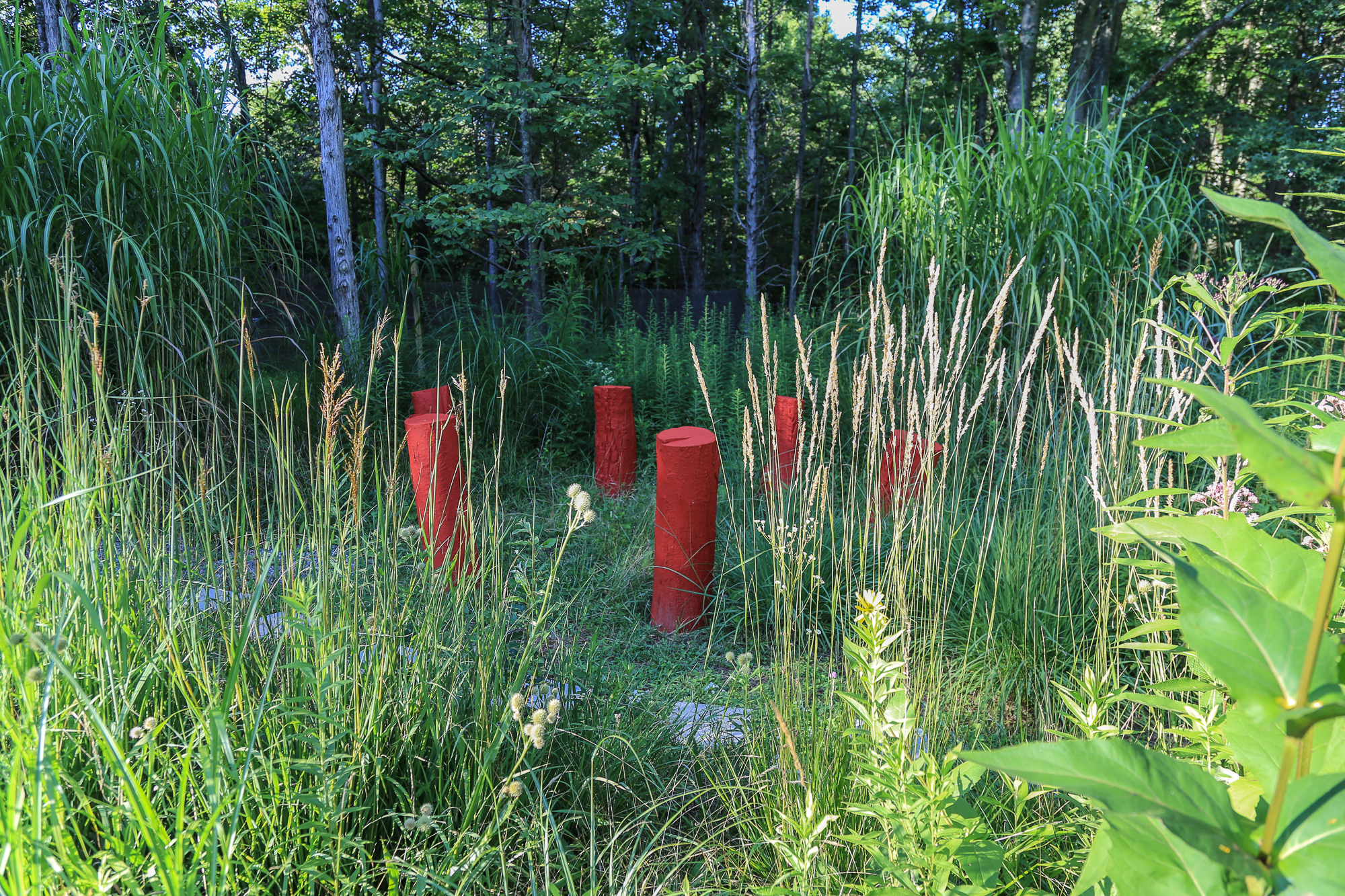 ... that this melancholy, pleasant light has become a part of us.
... that this melancholy, pleasant light has become a part of us. So we can take sensual delight in the warm light limning the leaves of this tall Vernonia ...
So we can take sensual delight in the warm light limning the leaves of this tall Vernonia ...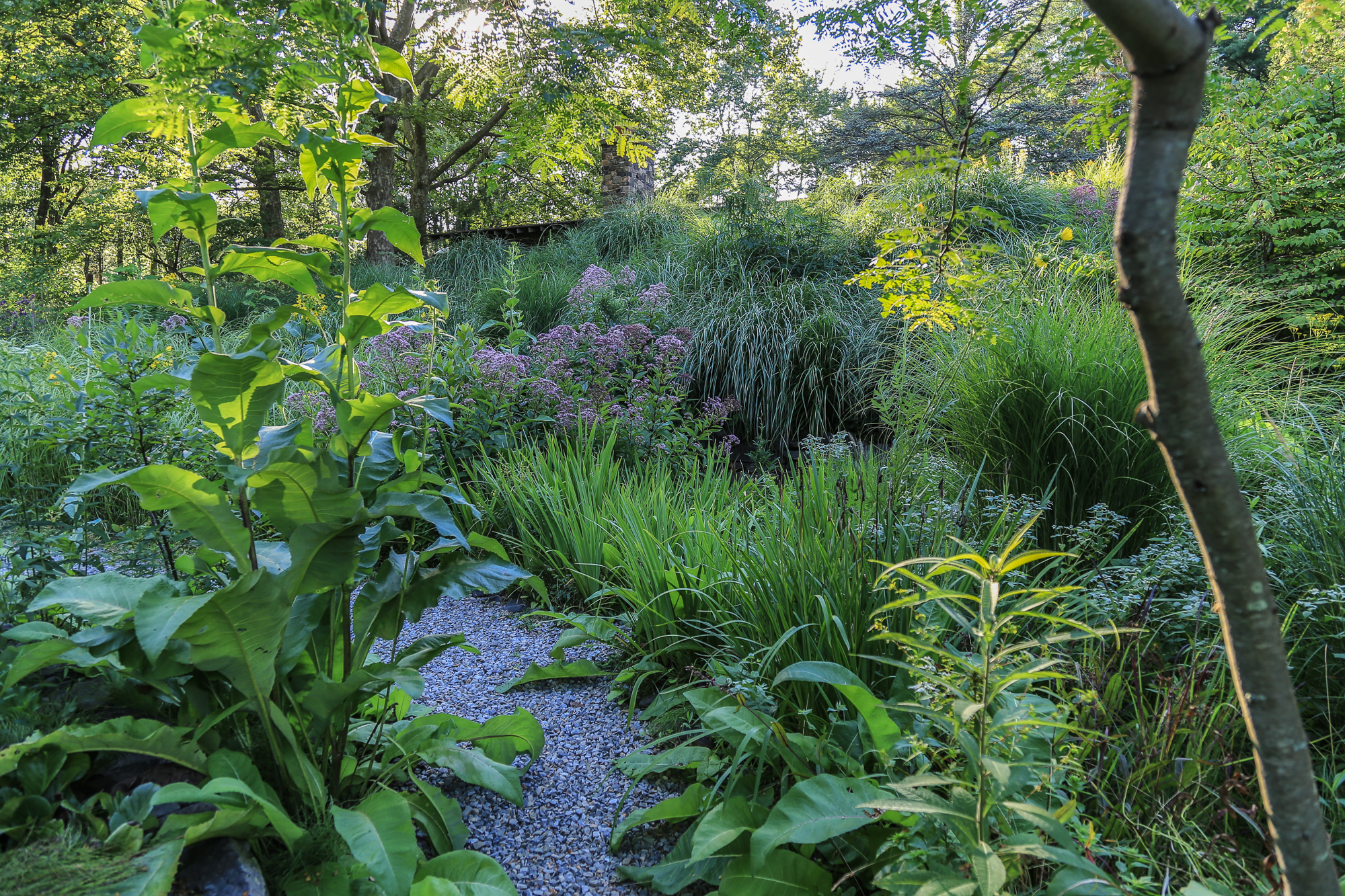 ... or feel safety in walking this shadowed path back to the house ...
... or feel safety in walking this shadowed path back to the house ...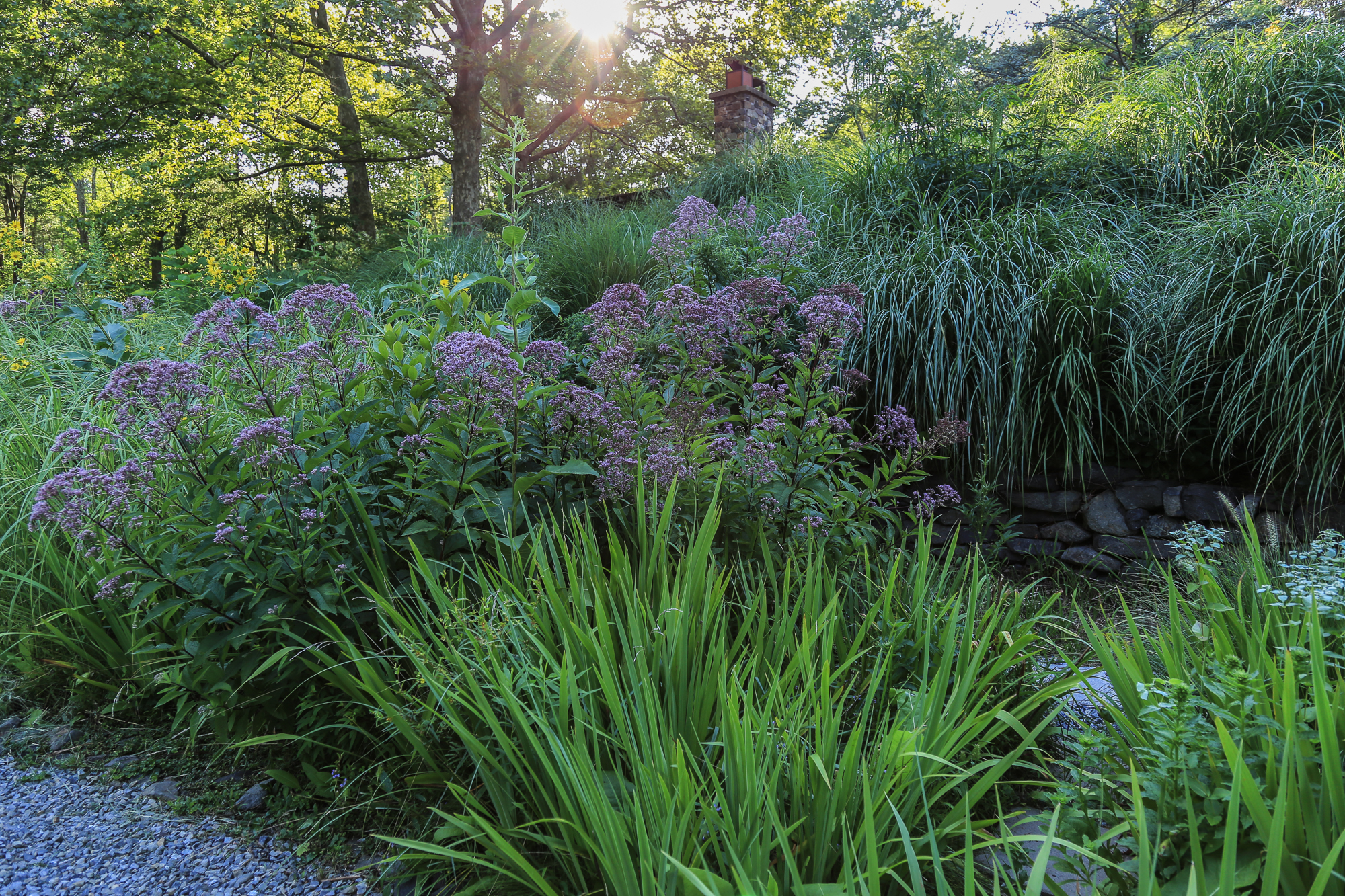
 ... climbing the gentle slope with a sense of return ...
... climbing the gentle slope with a sense of return ...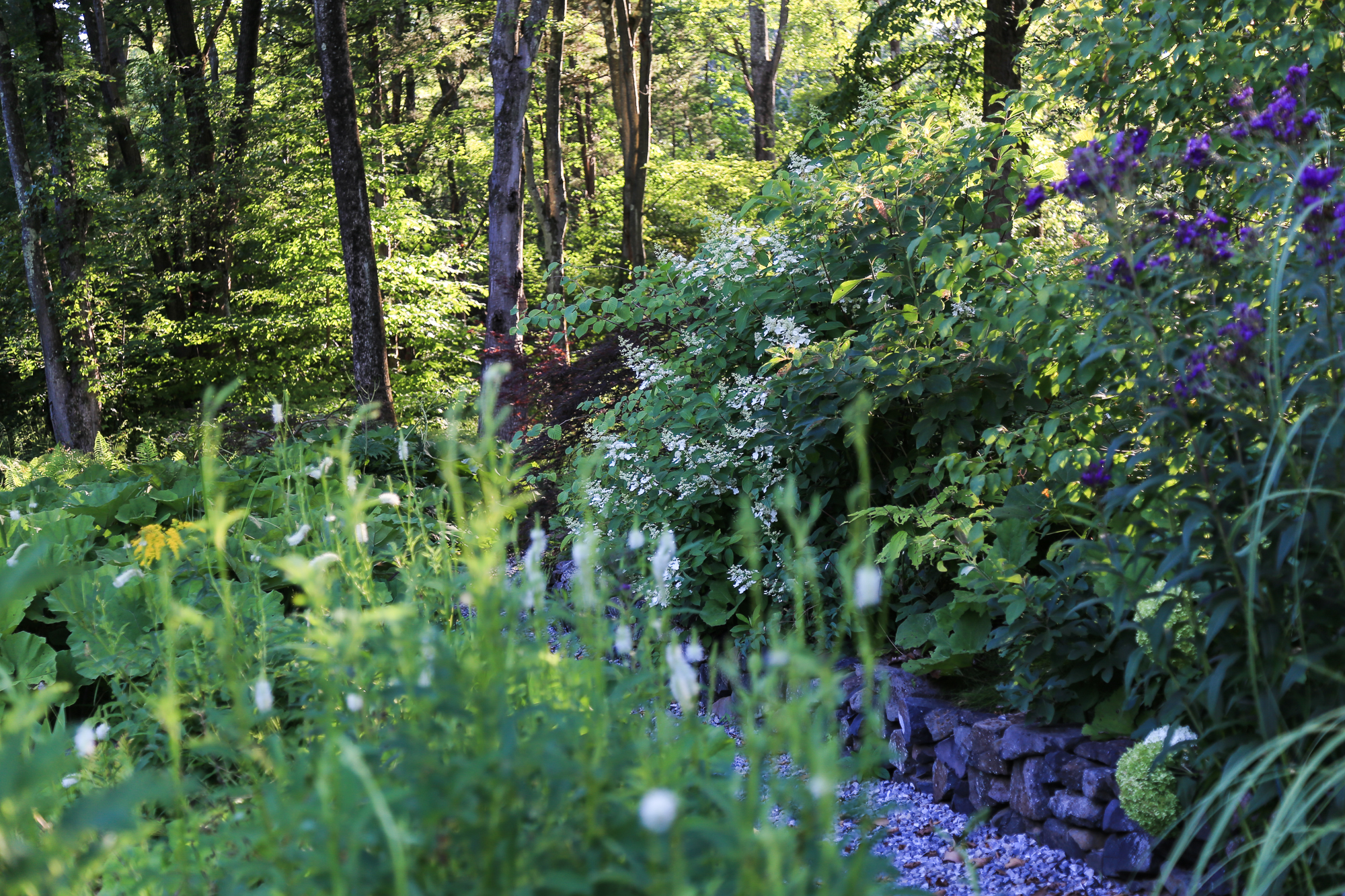 ... almost bathing in the plants ...
... almost bathing in the plants ... ... glimpsing the darkening woods ...
... glimpsing the darkening woods ... ... on the final approach to the house.
... on the final approach to the house.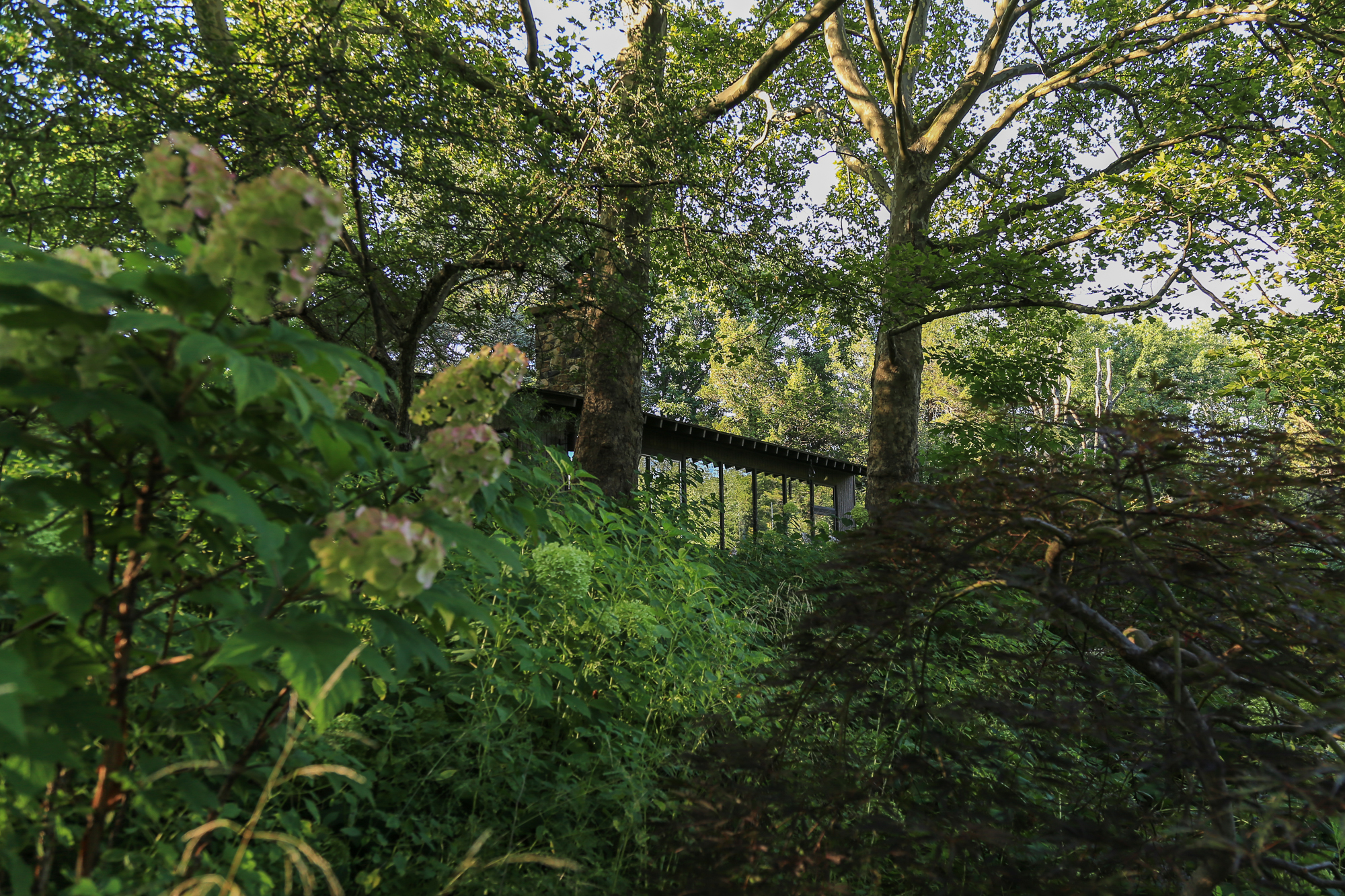
'I hate to see that evening sun go down.'
___________*Bowring, Jacky (2016-07-07). Melancholy and the Landscape: Locating Sadness, Memory and Reflection in the Landscape (Routledge Research in Landscape and Environmental Design) (Kindle Locations 150-153). Taylor and Francis. Kindle Edition.